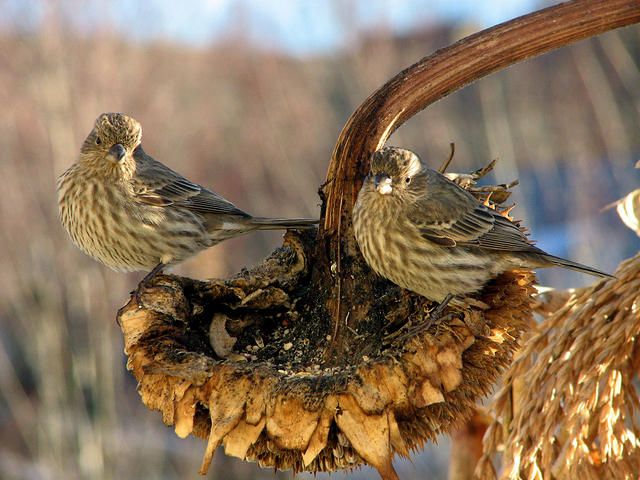Spokane, Wash. (This article was updated 4/7/21)
Continued reports of sick or dead birds at backyard feeders across Washington and other Northwest states prompted the Washington Department of Fish and Wildlife (WDFW) to recommend people continue to leave their wild bird feeders down or to take extra steps to maintain them this winter. “You can help to stop the spread of salmonellosis by discontinuing backyard bird feeding until at least April 1 to encourage birds to disperse and forage naturally,” says WDFW veterinarian Dr. Kristin Mansfield. With spring food sources emerging, WDFW had updated their warning to say that slowly adding back in clean bird feeders is now possible. Read the updated FAQ here.
The department first asked residents to remove or clean feeders in February in response to a die-off of finches, such as pine siskins, as well as other songbirds. Salmonellosis, a common and usually fatal bird disease caused by the salmonella bacteria is to blame. When birds flock together in large numbers at feeders, they can transmit the disease through droppings and saliva.
Signs of Bird Sickness
The first signs that a bird may have salmonellosis is often a seemingly tame bird on or near a feeder. Birds infected with salmonella become very lethargic, fluff out their feathers, and are easy to approach. Unfortunately, at this point there is very little people can do to treat them. The best course it to leave these birds alone and report them (as well as any dead birds) via WDFW’s online reporting tool.
WDFW explains that discontinuing feeding of wild birds will not leave them without food supplies during the winter and spring months. “Birds use natural food sources year-round, even while also using backyard bird feeders, so they should be fine without the feeders for another month,” Mansfield says.

Clean Feeders Daily
If people do not choose to remove bird feeders, please clean them daily by first rinsing well with warm soapy water, then dunking in a solution of nine parts water and one part bleach. Finish by rinsing and drying before refilling.
Also please reduce the number of feeders to a number you can clean daily, as well as using feeders that accommodate fewer birds (such as tubes rather than platforms) and spreading out feeder locations. Keep the ground below bird feeders clean by raking or shoveling up feces and seed casings and turn over or cover bird baths so birds cannot access them.
It is possible, although uncommon, for salmonella bacteria to transfer from birds to humans through direct contact with infected birds, droppings, or through domestic cats that catch sick birds. When handling birds, bird feeders, or bird baths, it is best to wear gloves and wash hands thoroughly afterward.












